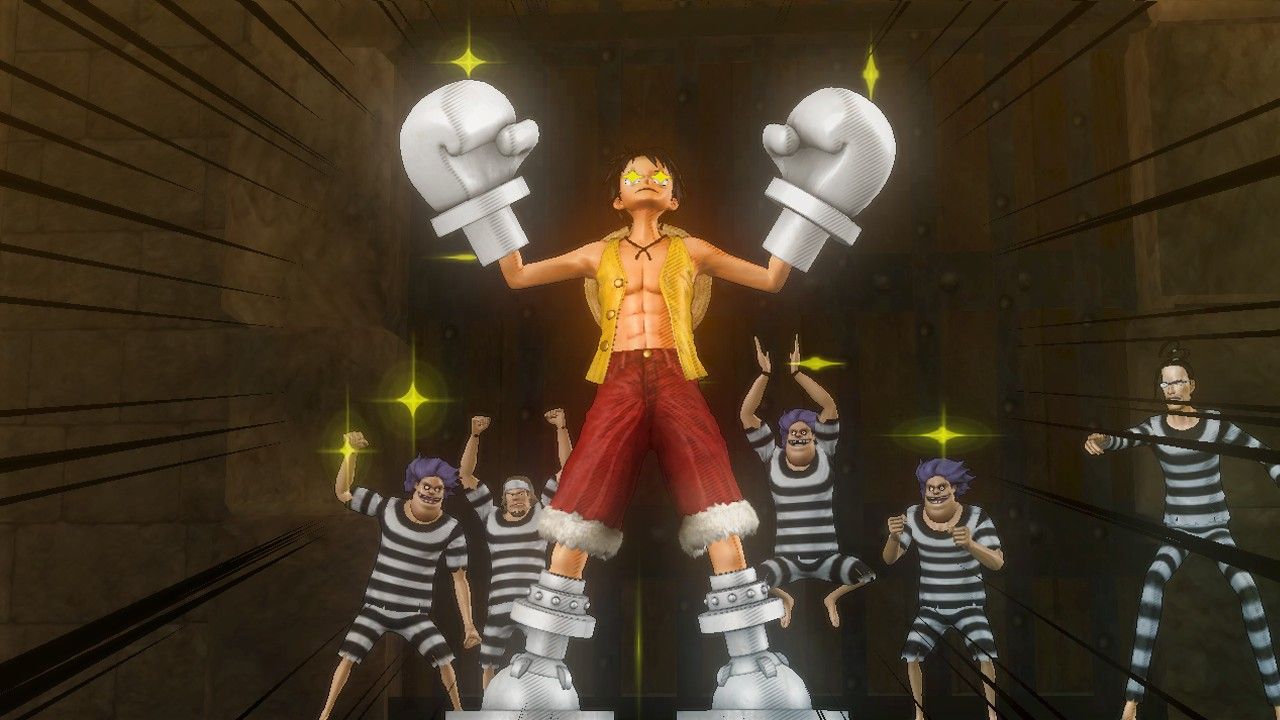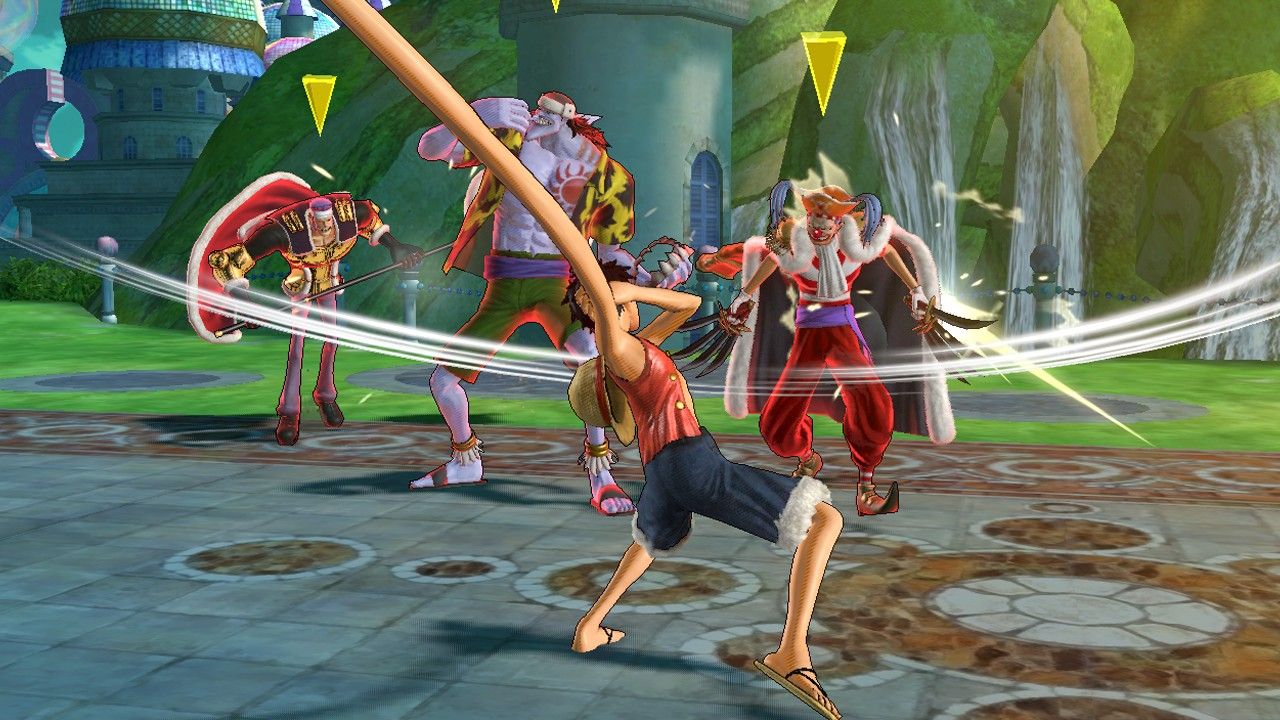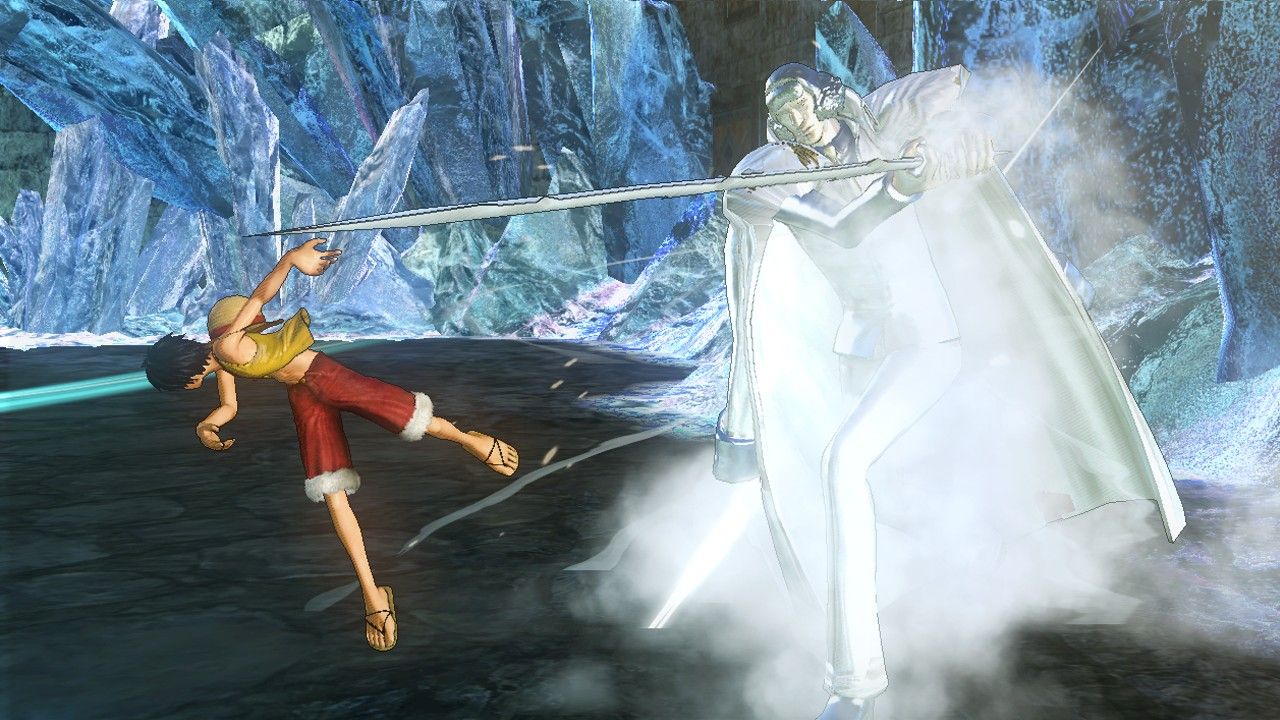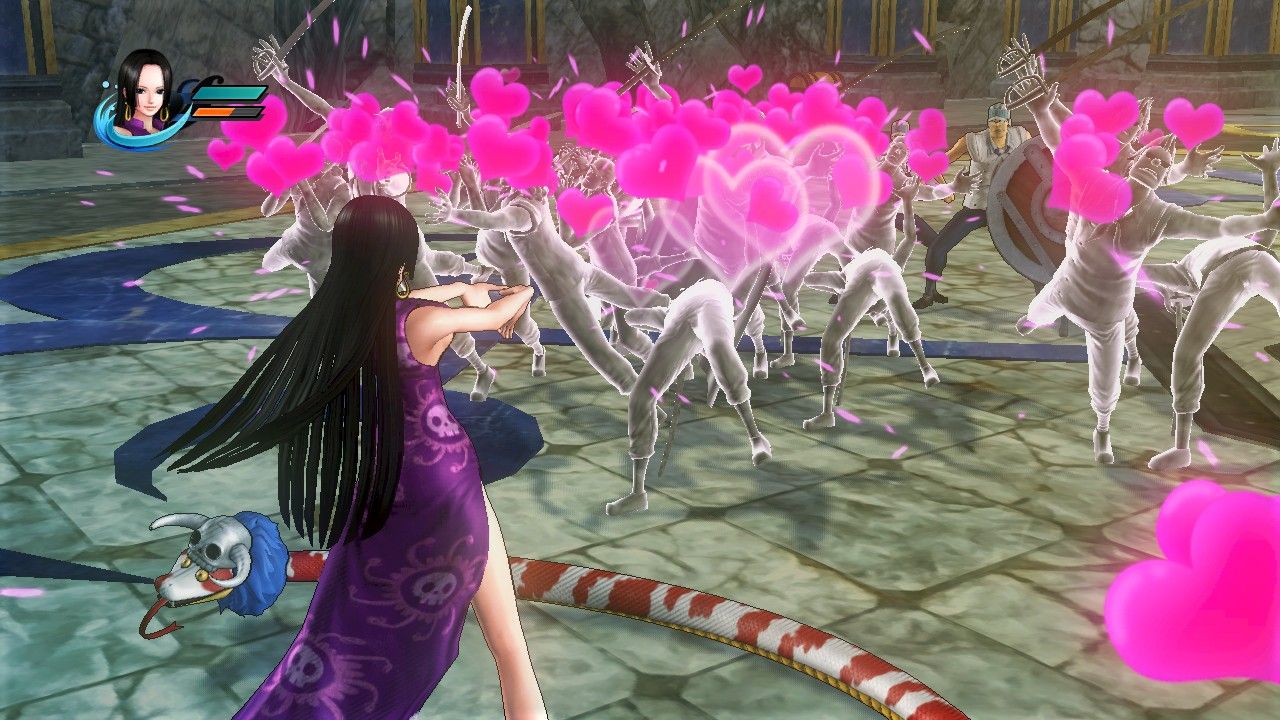One Piece: Pirate Warriors Review
The Tecmo Koei name on the box may put Western gamers on the alert as they fear another Dynasty Warriors clone. Yes, the game puts you against large groups of weak enemies to easily brush aside, but to be honest this anime tie-in does fare better than expected. Mainly because Ruffie, the main character ate some gum gum rubber fruit and now has stretchier limbs than Street Fighter’s Dhalsim.
Stages consist of two types. First is a familiar Dynasty Warriors mode where you make your way around a map of linked squares, taking over each one, but without DW’s constrictive time limits ruining your fun. Other stages feature platforming elements that mainly consist of matching on-screen button-prompts. These can be very awkward, especially when the camera decides to go AWOL. When it behaves though, they can be quite fun, when you’re trusted to press a button for yourself that is. I was expecting a few naval battles, seeing as you play as a group of pirates, but no, nothing even remotely piratey. The battles can become very repetitive, so it’s not a game you’re going to want to play all day. There only about seven hours worth of gameplay for the main story as it is anyway.

Basic attacks are handled with the Square and Triangle buttons, combining to create some fun combos. Ridiculous flurries of fists hail down on large groups of enemies like machine gun fire with different combinations of the buttons providing various combos that can end in throws, slams and launcher moves. Rather than attack single opponents, most of your moves cover wider areas.
Team combos are simple to activate if you’re in range of a fellow crew member, but all they really are, are brief character changes as you control them for a few seconds. Unfortunately, apart from one, everyone else is utter pants compared to Ruffie. For some parts of the game you’ll control them for whole fights and their move set is incredibly dull in comparison. Outside of the main game you can use these characters to play through similar levels to the single-player campaign, but there’s no real desire or incentive to do so.

The Circle button activates a special once a metre has been filled by regular moves. These are great for clearing away groups of goons or taking a chunk of health from a boss. R1 is home to another series of special moves that can be swapped between with the d-pad. Slams, axe-kicks or even swelling into a giant balloon to repel cannonball fire are amongst the various attacks to look forward too.
Unfortunately, after a few levels it becomes apparent that there aren’t many attacks to unlock. You can’t buy any, instead you just eagerly await each new stage in-case you’re gifted a new move at the start. In fairness I was able to use one of the first combos I was given throughout most of the game.
It’s only the boss fights that require any skill as the thousands of regular enemies that I encountered don’t even make a decent effort at attacking. This does make the boss battles seem like they’re sitting on something of a difficulty spike, but not to the extent where it seemed unfair or poorly balanced. In fairness, I could have tried varying my attacks more as I was cutting through the swathes, as using one basic combo probably wasn’t the best preparation for coming up against an opponent that would do unexpected things like block and actually fight back.
The finishing moves to each boss fight, or more specifically the cutscenes with the odd QTE, are fantastic to look at though thanks to their inventive nature and our hero being able to stretch, expand and blow himself up like a violently possessed animal balloon.
Levelling up is an automatic affair, but you are awarded equippable coins during the game that can provide stat boosts for defense, stamina and attack. The difference is minimal for most of the game though. Some skill boosts are available if you link up the right combination of coins, but they usually have a downside and I found I preferred to have stronger coins without the extra skill.

The story linking the levels together is nothing short of a shambles. Huge chunks of it are merely relegated to narrated voice-overs during a loading screen and for the most part it feels like you’re simply playing random sections from the TV show that are nothing short of bewildering if you’ve never watched it.
It just doesn’t make any sense. For f**k’s sake, everyone dies at one point, and then we just have another level like nothing happened and everybody’s back. From what I could make out, you play as the leader of a group of pirates and the early levels seem to reminisce over how each crew member joined up. At some point we stumble into a new story involving the hero’s brother and their multiple dads and well, who knows.
The characters are all straight out of an anime cliché book. Every emotion is cranked up to 11 and every time there are tears, there’s so much snot and tears coming out you think they’re going to burst. The dialogue hops between cutscenes, talking heads and still comic cells so nothing ever really gels together.

The game maintains a Japanese identity with Japanese dialogue throughout, which I’d usually applaud, but an English option may have been handy too as characters prattle on mid-battle and you don’t really have time to look at the subtitle translation in the bottom left of the screen while you’re fighting dozens of enemies at once.
Multiplayer options come in co-op form as you team up to take on one of the levels from the main game with one of the many unlockable characters. Lobbies are simple enough, listing games with the stage and difficulty level. Hopping into games was a smooth affair as was the actual combat. I was free to fight alongside my online partner, or just attack the stage at will.
Post-game you’re chucked back to the menu after getting your XP and a few coins. I was disappointed to see that during and after the stage there was no mention of scores for each player, like how many kills each of us got, robbing the game of any competitive element at all.
